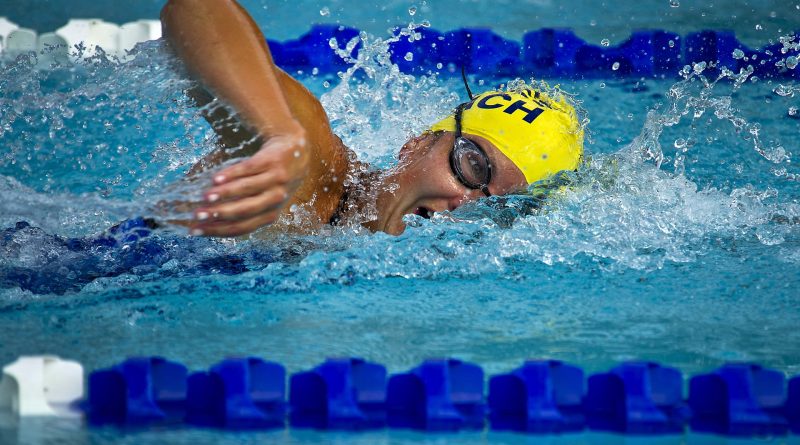Swimming – coordinated breathing in front crawl
Many swimmers find breathing in the crawl harder than in breaststroke, first because the nose is closer to the water surface at the point of inhalation, and secondly, because it is less clear how to coordinate breathing with movement. The mark of a competent front crawl is the ability to coordinate breathing seamlessly with the movement of the arms and body. If you try to inhale too early -before your arm, head, and hips have rotated – you are likely to take in a mouthful of water. If you raise your head out of the water too late, there will be insufficient time to inhale freely. Either way, you will interrupt the steady rhythm of the stroke. Unlike the breaststroke, crawl requires a continuous flowing action by the limbs, which is one reason why many swimmers overestimate the amount of air they need to take in. As in the breaststroke, there is no place for the deliberate holding of breath. Again, the exact rhythm or rhythms will be unique to you. Explore the options and experiment with rhythmical variations, allowing yourself to discover what works or feels best at the time.
The front crawl is the only stroke in which the body rotates to the side for breath to be taken. There’s no rule about which side to breathe on, but for the sake of symmetry and balanced muscular development, it is worth learning to breathe on each side alternately (bilateral breathing). Right-handers find it more comfortable to extend the right arm and look back to the left, and vice versa for left-handers. This is why right-handed people are likely to prefer breathing to the left side (and vice versa). If you already have a favored side for breathing, you may choose to refine your stroke before attempting bilateral breathing. But when learning the crawl, resist the temptation to breathe only on the side that feels more natural.
Swimmers who find it easier to breathe to one side usually incorporate a natural hip roll to that side. When instructed to breathe on the unfamiliar side, they usually attempt to do so by turning their head alone. The result is that they tend to pull the head and shoulders further out of the water to allow more space to breathe.


